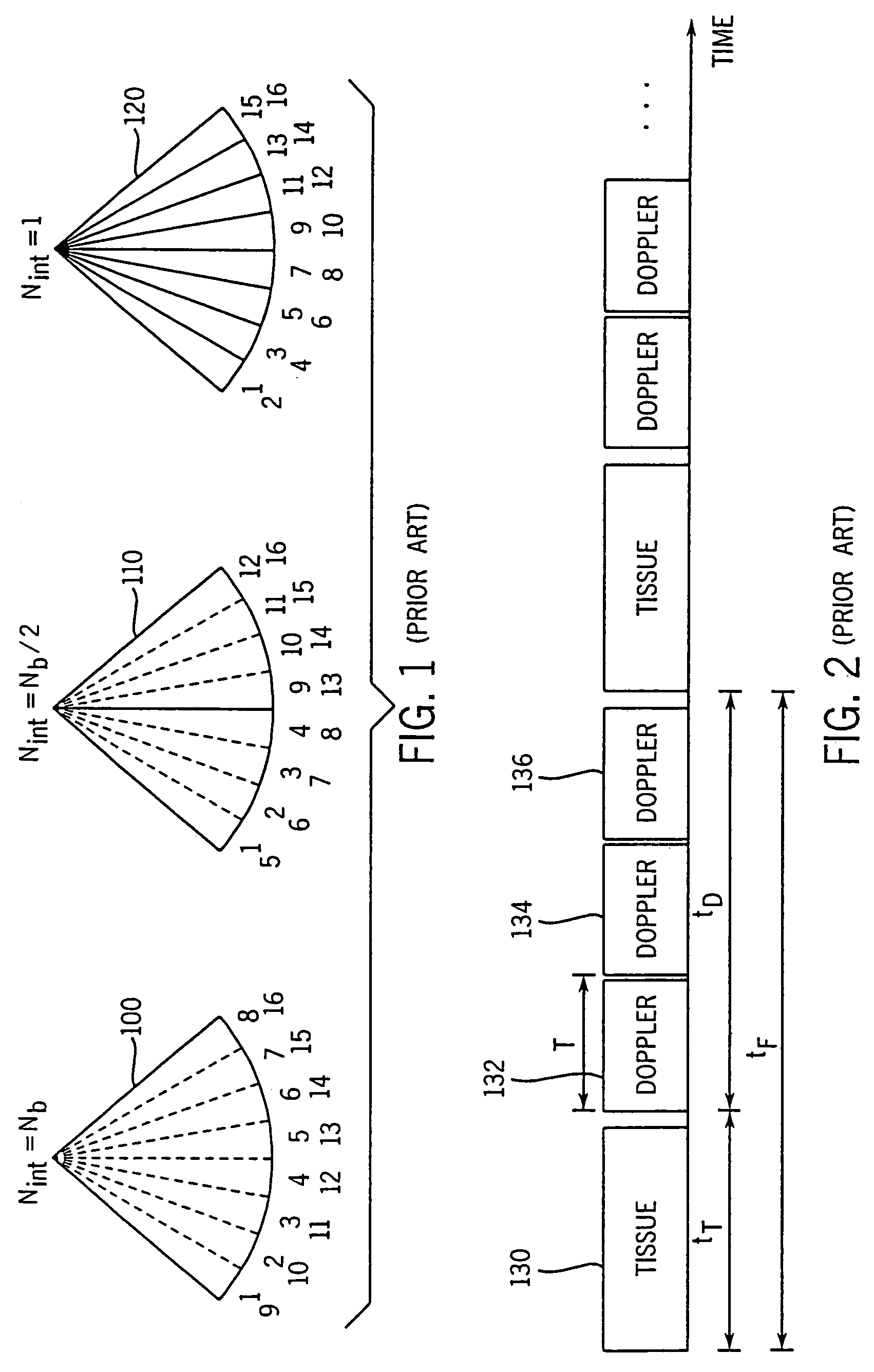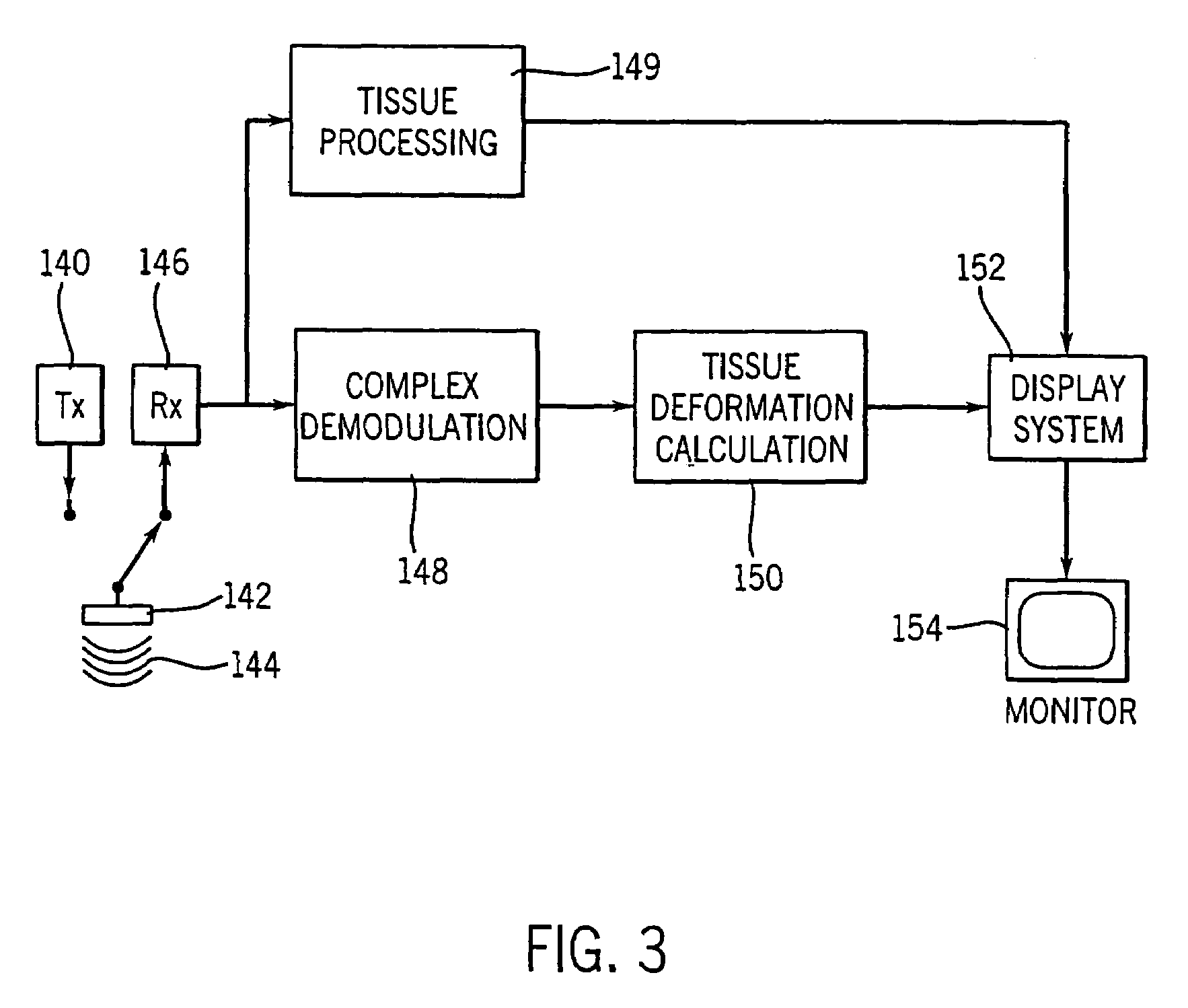Method and apparatus for providing real-time calculation and display of tissue deformation in ultrasound imaging
a tissue deformation and ultrasound imaging technology, applied in the field of diagnostic ultrasound systems, can solve the problems of poor temporal resolution, inability to calculate and display the instantaneous strain value in real-time, and inability to achieve real-time capability, so as to reduce aliasing and maintain spatial resolution
- Summary
- Abstract
- Description
- Claims
- Application Information
AI Technical Summary
Benefits of technology
Problems solved by technology
Method used
Image
Examples
Embodiment Construction
[0052]A method and apparatus are described for generating diagnostic images of tissue deformation parameters, such as strain rate, strain and tissue velocity, in real time and / or in a post-processing mode. In the following description, numerous specific details are set forth in order to provide a thorough understanding of the preferred embodiments of the present invention. It will be apparent, however, to one of ordinary skill in the art that the present invention may be practiced without these specific details.
[0053]A block diagram for an ultrasound imaging system according to a preferred embodiment of the present invention is shown in FIG. 3. A transmitter 140 drives an ultrasonic transducer 142 to emit a pulsed ultrasonic beam 144 into the body. The ultrasonic pulses are backscattered from structures in the body, like muscular tissue, to produce echoes which return to and are detected by the transducer 142. A receiver 146 detects the echoes. The echoes are passed from the receive...
PUM
 Login to View More
Login to View More Abstract
Description
Claims
Application Information
 Login to View More
Login to View More - R&D
- Intellectual Property
- Life Sciences
- Materials
- Tech Scout
- Unparalleled Data Quality
- Higher Quality Content
- 60% Fewer Hallucinations
Browse by: Latest US Patents, China's latest patents, Technical Efficacy Thesaurus, Application Domain, Technology Topic, Popular Technical Reports.
© 2025 PatSnap. All rights reserved.Legal|Privacy policy|Modern Slavery Act Transparency Statement|Sitemap|About US| Contact US: help@patsnap.com



